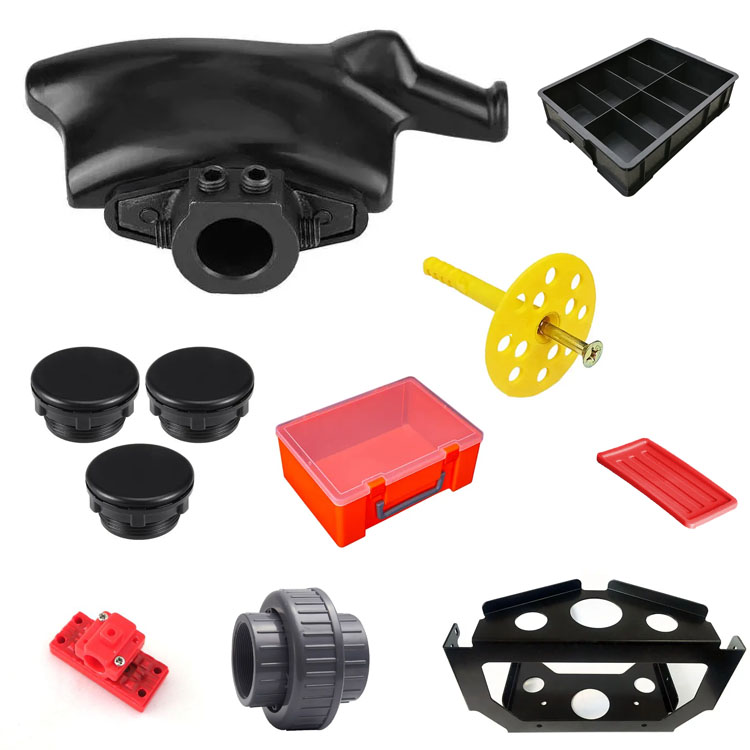Phase One: Mold Design – The Blueprint for Success or Failure
Design is the soul of a mold, determining its manufacturability, service life and product quality.
DFM (Design and Manufacture Feasibility Analysis)
Core: Communicate fully with product designers and review the 3D drawings of the product.
Key points
Demolding slope: Ensure that the product can be demolded smoothly and avoid scratches.
Wall thickness analysis: Check for uniformity to avoid shrinkage and depression.
Parting surface selection: Determine the interface between the moving die and the fixed die, taking into account the product appearance, flash, and the ease of processing.
Gating system design: including runner and gate. Should a cold runner or a hot runner be chosen? The location and type of gates (side gates, point gates, and hidden gates) all directly affect the quality and appearance of the product.
Ejection system design: Plan the positions and quantities of ejector pins, ejector cylinders, and push plates to ensure smooth ejection of the product without any white top or deformation.
Cooling system design: This is the “efficiency system” of the mold. The waterway design should encircle the cavity as evenly and fully as possible to shorten the cooling time and reduce product deformation.
Exhaust system design: Exhaust grooves are set up at the final filling point of the melt to prevent trapped gas from causing charring and incomplete filling.
Mold flow analysis
An essential tool for modern mold design. Use software such as Moldflow to simulate the plastic filling, pressure holding and cooling processes, and predict and solve potential defects in advance, such as:
The locations of weld seams and air cavities.
Contraction and warping trend.
Optimize the holding pressure and cooling scheme.
Structural design
Mold base selection: Choose standard mold bases or custom non-standard mold bases.
Cavity layout: One cavity per mold or multiple cavities per mold? Balance the layout to ensure balanced filling.
Lateral core-pulling mechanism: For products with an upside-down mechanism, design a slider and a sloping top mechanism.
Material selection: Choose the appropriate die steel based on production volume and product requirements, such as P20, 718, S136, H13, etc., and take into account its hardness, toughness and polishing property.
Phase Two: Precision Machining – Turning blueprints into reality
This is the core link in transforming design data into precision parts.
CNC milling
Rough machining: Quickly remove most of the excess material.
Semi-finishing and finishing: Use high-speed CNC to obtain precise cavity shapes and dimensions. Processing strategies and tool path planning are of vital importance.
Heat treatment
Quenching, nitriding and other treatments are carried out on mold cores, sliders and other materials that require high hardness and high wear resistance to increase the service life of the molds.
Electrical discharge machining
It is used for processing deep grooves, sharp corners, fine textures and complex shapes of hard steel that are difficult to achieve with CNC. Use copper or graphite electrodes.
Wire cutting
It is mainly used for processing precise inner and outer contours, insert holes, slider guide grooves, etc., with extremely high precision.
Grinding Machine and Fitter
Ensure the parallelism and perpendicularity of the formwork frame and template.
Precision fitters’ mold making, trimming and assembly are manifestations of their experience and skills.
Phase Three: Polishing and Surface Treatment – Giving the Mold “Face”
Copy it directly onto the product surface to determine the product’s appearance.
Polishing
Use sandpaper, drill gypsum, etc. to gradually grind from coarse to fine to achieve the required surface smoothness. Grades range from VDI 3400 or SPI A-1 (mirror finish) to C-3 (matte finish).
Erosion pattern/bite pattern
Leather texture, orange peel texture, geometric patterns, etc. are created on the surface of the mold through chemical etching. Professional etching factories are needed for cooperation.
Phase Four: Mold Assembly and trial mold – Final Verification
Assembly
Carefully assemble all the processed parts (mold kernels, sliders, inclined tops, ejector pins, cooling water pipes, etc.) together.
Check whether all moving parts are smooth and whether the clearances are reasonable.
T1 Mold test
Conduct the first mold trial on the injection molding machine.
Objective:
Verify the mold functions (whether the mold opening and closing, ejection, and core-pulling are normal).
Check whether there are any defects in the appearance and size of the first batch of samples.
Provide a basis for subsequent process optimization.
Debugging and Optimization
Based on the problems of the sample, the mold is modified (such as adjusting the exhaust, polishing, and modifying the size), and the injection molding process parameters (temperature, pressure, speed, and time) are optimized.
Phase Five: Mold Acceptance and Delivery
Sample confirmation: Submit qualified samples to the customer for approval.
Document delivery: Provide mold drawings, maintenance manuals, mold trial reports, etc.
Mold maintenance: Develop a maintenance plan, including regular cleaning, rust prevention, and replacement of vulnerable parts, to extend the mold’s lifespan.
Post time: Sep-25-2025

